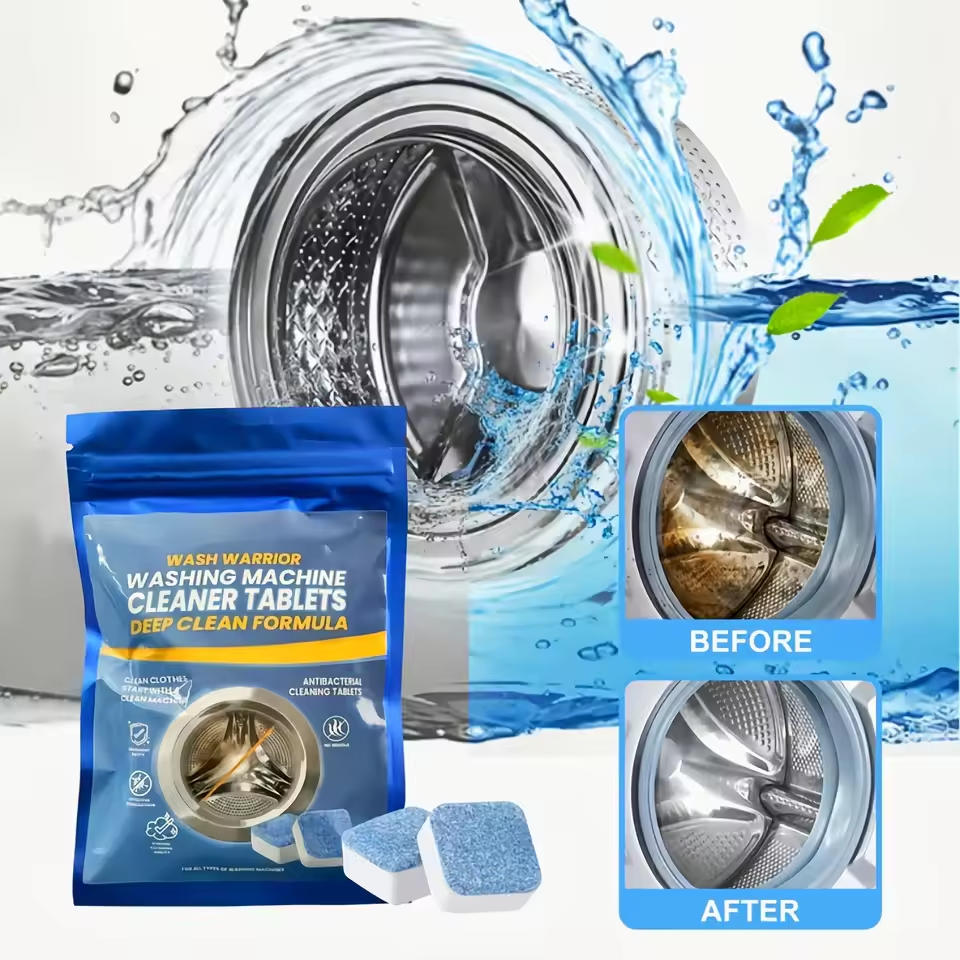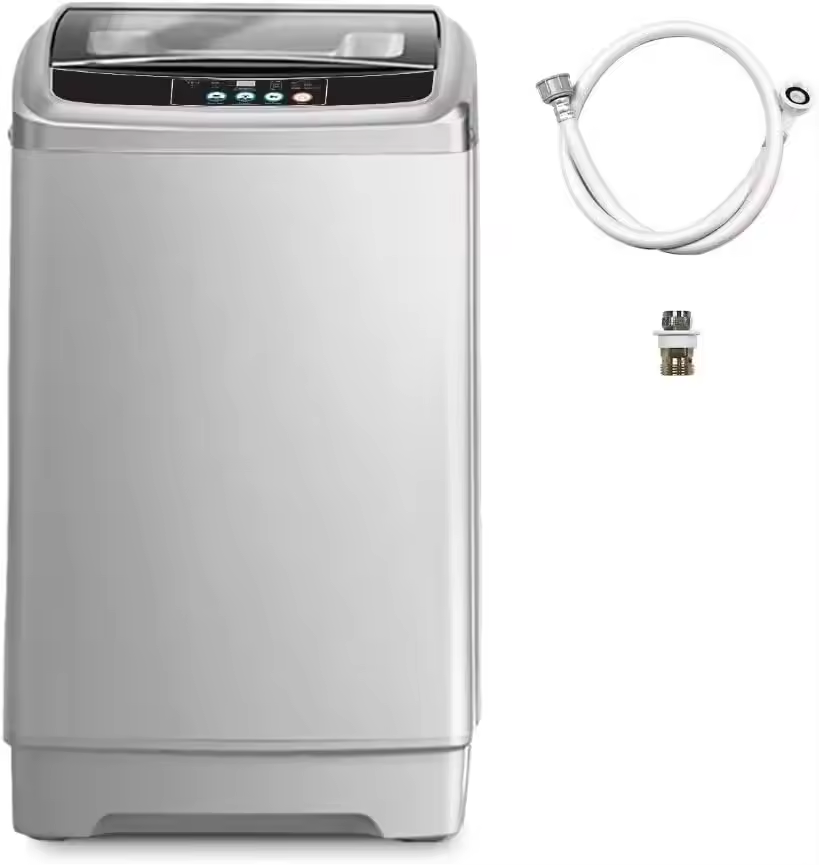How To Clean Moldy Washing Machine: Safe And Clean
The Hazards of Mold in Washing Machines
Mold in washing machines poses serious risks. It not only damages fabrics but can also harm health. Long-term exposure to mold spores may trigger allergies or respiratory issues. Some people might feel skin irritations. A moldy smell in clothes is also common. These hazards underline the importance of addressing mold promptly. Keeping your washing machine clean protects your clothes and well-being.

Mold spores spread easily in moist environments. Washing machines offer such conditions. Spores can grow on the rubber seal, detergent drawer, or drum. This can lead to persistent mold issues. Removing mold is not just about aesthetics. It ensures a safe laundry environment. It also extends the life of your machine.
In summary, mold in your washing machine can harm your health and clothes. It can also bring persistent odor problems. Cleaning moldy washing machines is essential for a safe laundry routine. Regular maintenance prevents these hazards. Ensure you act quickly if you spot mold signs in your machine.
 Signs You Have Mold in Your Washing Machine
Signs You Have Mold in Your Washing Machine
Recognizing mold in your washing machine is critical. Look for these key signs to identify a mold problem:
- Unpleasant Odor: A musty or sour smell emanating from your washing machine or clothes after a wash cycle is a telltale sign.
- Visible Mold: Black, green, or white specks around the rubber gasket, detergent drawer, or drum signal mold presence.
- Allergy Symptoms: If you notice increased allergy symptoms or respiratory issues without another apparent cause, consider checking your machine for mold.
- Stains on Clothes: Unexplained stains on clean laundry might be due to mold in the machine.
- Washing Machine Malfunctions: A machine that leaks or doesn’t drain well creates suitable environments for mold.
If you detect any of these signs, it’s time to clean your moldy washing machine promptly. Tackle the issue to protect your health and extend the lifespan of your clothes and machine.
Causes of Mold Growth in Washing Machines

Understanding the causes of mold growth in washing machines is key to prevention. Here are the main reasons mold may start to grow in your appliance:
- Damp Conditions: Mold thrives on moisture. After running a wash cycle, water that remains in the drum, gasket, or drawer creates a perfect environment for mold.
- Lack of Ventilation: Keeping the washing machine door shut traps humidity. This can lead to mold growth.
- Residue Build-Up: Soap scum and fabric softener residue can stick to parts of the machine, providing food for mold spores.
- Infrequent Use: If you don’t use your washing machine regularly, standing water or dampness can promote mold growth.
- High Humidity: Washing machines in humid areas are more prone to mold. More moisture in the air means more potential for mold.
By targeting these causes, you can better understand how to clean a moldy washing machine and prevent mold from returning.
Step-by-Step Guide to Cleaning Mold from Your Machine
Cleaning a moldy washing machine need not be daunting. A simple and effective step-by-step guide can help you eliminate mold and its odors. Here’s how to clean your moldy washing machine:
- Prepare Your Materials: Gather white vinegar, baking soda, a microfiber cloth, and protective gloves. Vinegar and baking soda are powerful mold fighters.
- Empty the Machine: Ensure no clothes are in the machine. Remove any items from the drum.
- Run a Hot Wash Cycle with Vinegar: Add two cups of white vinegar to the detergent drawer. Run a hot water cycle. Vinegar’s acidity helps kill mold spores.
- Pause the Cycle: After an hour, stop the machine. Let the vinegar solution soak the drum and gasket. Soaking loosens mold and residue.
- Clean the Gasket and Drawer: While soaking, clean the rubber gasket. Use a damp cloth with vinegar. Pull back the seal and scrub gently. Also, clean the detergent drawer. Remove it and soak it in a vinegar solution if possible.
- Resume and Complete the Cycle: After soaking, continue the wash cycle until it finishes.
- Run a Second Cycle with Baking Soda: Add a cup of baking soda to the drum. Run another hot water cycle. Baking soda freshens and removes lingering odors.
- Dry the Machine: After the cycles, wipe the inside of the drum. Leave the door open to air out and dry completely.
- Clean the Filter: Don’t forget the filter. Mold can hide there. Clean it according to your machine’s manual.
This routine, when done regularly, can prevent mold buildup. Your machine stays fresh and clean, protecting your clothes and health. Remember to tailor these steps to your specific machine model as needed. If mold persists, it may be wise to call a professional for help. Keep your machine mold-free and functioning at its best with these tips.
Preventive Measures to Keep Mold at Bay

Preventing mold in your washing machine is vital for your health and the longevity of your appliance. Here are key measures to prevent mold from taking hold:
- Keep It Dry: After each wash, leave the door and detergent drawer open to dry out. This practice reduces moisture, which mold needs to grow.
- Run Regular Maintenance Cycles: Use a washing machine cleaner or a hot water cycle with vinegar monthly. This kills any lingering spores and sanitizes your machine.
- Remove Wet Clothes Promptly: Don’t leave damp clothes in the machine. Move them to the dryer or hang them up to dry right after the wash cycle finishes.
- Wipe Down After Use: Take a dry cloth and wipe the gasket, glass, and any other seals after each wash to remove moisture and residue.
- Check Vents for Blockages: Ensure the washing machine vents are clear. Good airflow prevents damp spots where mold can start.
- Use the Right Amount of Detergent: Excess detergent can build up residue that molds feed on. Measure it according to the load size.
- Regular Filter Cleaning: Clean the drain pump filter regularly to prevent buildup that can trap moisture and lead to mold growth.
By following these preventive tips, you can keep mold at bay and ensure that your washing machine stays fresh and clean. Remember, regular maintenance is the best defense against mold.
When to Call a Professional for Mold Removal
At times, the mold in your washing machine may be stubborn. If simple cleaning has failed, it might be time to call in a professional. Experts possess the tools and knowledge to tackle deep-set mold. They ensure your machine is thoroughly sanitized. Here are situations when you should consider professional help:
- Persistent Mold: If mold remains after several cleaning attempts, an expert can help.
- Health Concerns: If you have health issues like allergies or asthma, don’t risk exposure.
- Bad Smells: When a foul odor persists even after cleaning, professionals can find and remove the hidden mold.
- Machine Damage: Signs of damage may indicate a deeper problem. Professionals can assess and repair it.
- Complex Machines: Some high-tech or front-loading washers may need a specialist’s touch.
Remember, professionals can help prevent future growth as well. They can offer advice on how to maintain your appliance. Bringing in a professional can save you time and ensure the job is done right. Don’t hesitate to ask for help if you’re dealing with a tough case of mold in your washing machine.
Maintaining Your Washing Machine After Mold Removal

After you clean mold from your washing machine, ongoing maintenance is vital. This secures the cleanliness and extends your appliance’s life. Here are simple steps to maintain your washing machine post mold removal:
- Dry it Out: Always leave the door open after a wash cycle. Let the drum and gasket air dry. This prevents moisture which mold loves.
- Routinely Clean Seals and Gaskets: Regularly wipe these areas with a dry cloth. This removes any lingering dampness or dirt. It’s a quick task but pays off.
- Keep Up with Filter Maintenance: Check and clean your machine’s filter as suggested by the manufacturer. A clean filter helps stop mold from coming back.
- Monitor for Musty Smells: Stay alert for any odd odors. A quick sniff could lead you to early signs of mold.
- Inspect Regularly: Do a quick check of areas like seals and detergent drawers. Catching a small mold spot early means easier cleaning.
- Use Mold Preventives: Consider anti-mold products in your wash cycle. They add an extra layer of protection.
Following these steps after you’ve learned how to clean a moldy washing machine will maintain your machine’s health. It also gives you peace of mind, knowing your appliance is safe and clean. Remember, consistency is the key when it comes to preventing mold. By staying vigilant and cleaning regularly, your washing machine will remain in good shape, mold-free.
Natural Alternatives for Mold Removal and Prevention
For eco-friendly mold removal, natural alternatives are effective and safe. They use items often found at home. These methods are gentle on your machine and health. Here’s how you can use them:
- White Vinegar: Already mentioned, it’s a strong acid that kills mold. Use it in a hot wash cycle.
- Baking Soda: This is a natural cleaner and deodorizer. Add it after using vinegar to freshen up your machine.
- Tea Tree Oil: It’s a natural fungicide. Mix a few drops with water, and spray it on moldy areas. Let it sit, then wipe off.
- Hydrogen Peroxide: It kills mold and brightens laundry. Add it to your wash or use it to scrub mold spots.
- Lemon Juice: The acid in lemon juice can break down mold. Apply it directly to mold, or add it to a wash cycle.
- Borax: It’s a natural mold inhibitor. Sprinkle borax powder on damp mold areas. Let it sit, then vacuum or rinse it away.
- Essential Oils: Some, like clove oil, have anti-mold properties. Add a few drops to your wash for a fresh scent and mold protection.
Using these natural solutions helps keep your washing machine mold-free. They prevent harsh chemical use and are kind to the environment. Regular use can help deter mold growth. Remember, consistency in cleaning is crucial for prevention. Combine these natural methods with the tips detailed earlier to maintain a sparkly clean and mold-free appliance.

